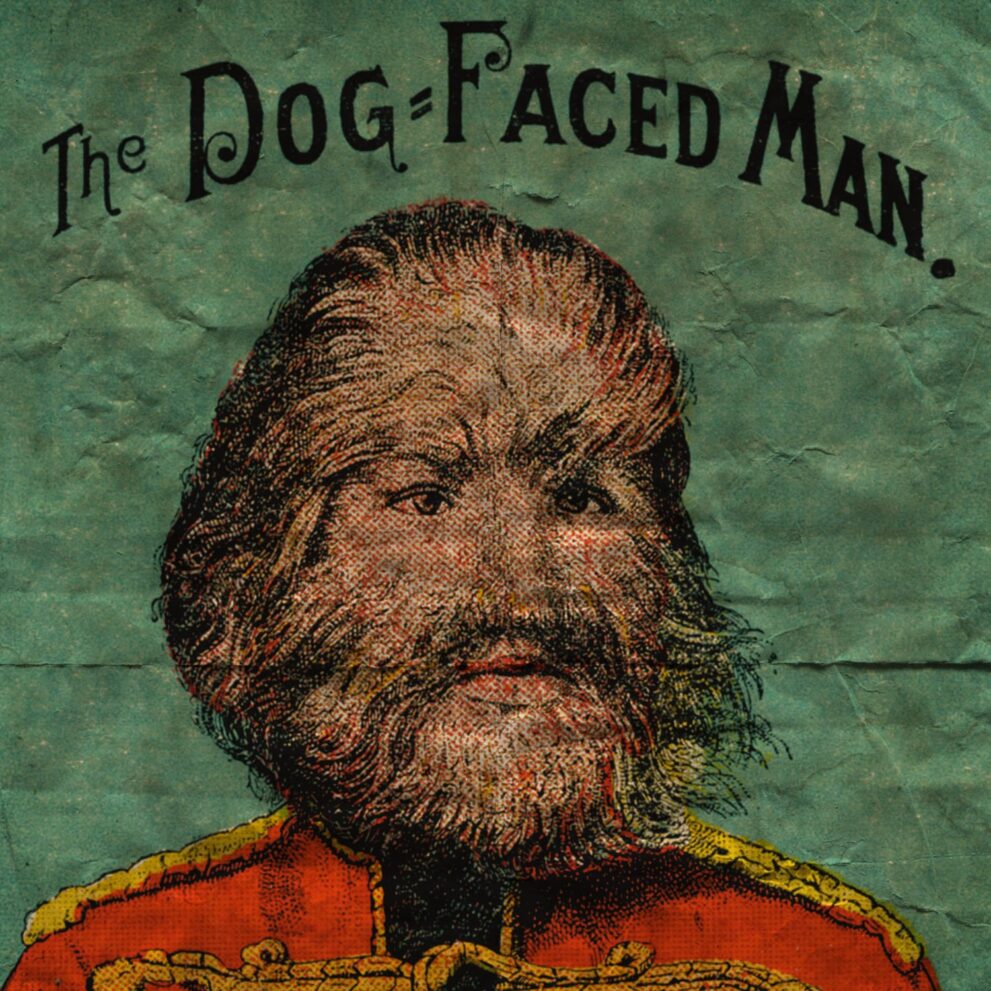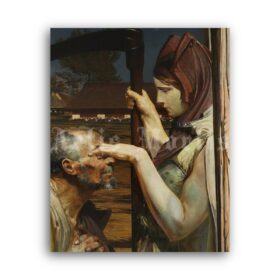The feature film Freaks was created by the renowned American director Tod Browning in the year 1932. The film underwent significant censorship measures, resulting in a substantial reduction of approximately 45 minutes from its original length, shortly after the completion of production. Subsequently, the picture was ultimately prohibited from public exhibition. In 1994, the film was subsequently added to the U.S. National Film Registry, over fifty years after its first release. Browning shown a notable willingness to depict a subject matter that was considered taboo at the period in question. The film explores the endangered genre of freak shows, focusing on individuals who relied on showcasing their physical abnormalities as a means of livelihood due to few alternatives. Currently, the phenomenon of freak shows is non-existent. Over the past century, significant advancements have been made in the field of medicine, accompanied by notable transformations in the ethical considerations surrounding human interactions. Individuals with disabilities are often treated or supported to attain a state of typical living situations. During the 19th century, there existed a notable disparity in attitudes. A significant portion of individuals, who presently possess the capacity to experience a fulfilling existence, were constrained to a solitary path: joining the circus of individuals with extraordinary physical or mental characteristics. However, it is worth noting that this road had certain favorable aspects. Numerous individuals with exceptional abilities amassed substantial wealth, enabling them to achieve a higher level of financial independence compared to their physically healthy counterparts. During her peak years in 1885-1886, the renowned performer Ella Harper, commonly known as the camel girl, commanded a weekly salary of $200 while working at Harris’s Circus. When accounting for inflation in present-day terms, the aforementioned amount corresponds to a monthly wage of $25,000. This represents a substantial quantity, does it not?
The birth of the genre
The inception of market relations marked the commencement of the discussed phenomenon. It appears that the circus is somehow relevant to the matter at hand. In the event that one lacks familiarity with the visual representation of circuses during the 18th century, it is advisable to envision a fair as a suitable alternative. Surrounding a large, vibrant canopy were additional tents including food stalls, amusement rides such as merry-go-rounds, and recreational swings. The aforementioned activities occupied significant expanses of land. Consequently, landowners initiated the practice of requesting a monetary compensation for the installation of marquees, occasionally setting the cost at an excessively high level. Moreover, the cost of transporting a traveling circus from one location to another was exceedingly high. Therefore, circuses were a considerably costly enterprise, necessitating substantial revenue generation for its proprietors. In contemporary society, there exists a prevailing notion that those who possess a slender physique as an acrobat or a tall stature as a strongman are deemed to have achieved a state of success in their lives. However, the matter at hand is not characterized by such straightforwardness. During that time period, the general populace was contented and had a high degree of desire for sensory gratification. The acrobatic performances and presence of clowns did not elicit surprise from anyone. The people did not exhibit enthusiasm towards renowned strongmen and magicians. One day, an individual conceived the notion of astonishing the audience by evoking profound, almost repulsive, feelings through the contemplation of the defects inherent in the human physique. This is the manner in which freak circuses emerged, as individuals with physical abnormalities and peculiarities replaced traditional performers such as acrobats and clowns. The play was constructed around fundamental and unsightly human emotions. The audience had a strong fascination with observing anomalous human anatomical structures and other physical irregularities. The architects of the earliest freak shows were motivated by a combination of interest and curiosity. During that era, the prevailing ethical standards promoted the practice of ridiculing and mocking individuals of this nature. The spectators of the carnival featuring individuals with unusual physical characteristics congregated beside the waterway. The individuals proceeded to make a payment, thereafter departed, and subsequently returned to engage with a different ensemble. Therefore, the exhibition of abnormal individuals has the potential to generate significant financial gains.
During the 17th century, individuals with notable physical abnormalities and medical conditions emerged as prominent figures who capitalized on their unique appearances to generate income. The Siamese twins Lazarus and Joannes Baptista Colloredo, hailing from Genoa, were widely recognized as the most renowned anomalies of their era. John can be characterized as an underdeveloped protrusion emerging from the vicinity of his brother’s chest, rather than being perceived primarily as an individual. He consistently maintained closed eyelids and an open mouth, rendering him incapable of verbal communication. However, the organism exhibited signs of life, locomotion, and consumption, indicating that the brothers possessed distinct digestive systems. Lazarus, a remarkably agile and skinny individual (except the presence of a partially attached sibling), embarked on extensive travels around Europe during the first half of the 16th century, visiting countries such as Denmark, Germany, Italy, and England. His endeavors were met with widespread acclaim and achievement in each location. Furthermore, he later entered into matrimony and fathered offspring who exhibited typical development.
During the early 18th century, a distinct genre known as the freak-show emerged as a separate entity from the conventional circus. Entrepreneurial individuals identified individuals in various states of physical impairment, illness, and underdevelopment on the streets, and transformed their circumstances into a setting like that of a zoo. The inaugural presentation of a traditional freak show is widely acknowledged to have occurred in 1738, featuring the exhibition of a female individual purportedly possessing a simian cranium, originating from Guinea. Indeed, contemporary scholars tend to hold the view that the woman exhibited no abnormal characteristics. During that period, Europeans regarded Africans from unfamiliar tribes as highly unusual, and even an average African lady, perhaps unwell, would be perceived as an anomaly. However, these assertions are merely speculative. However, the presence of freak exhibitions throughout Europe remained infrequent. Freaks were commonly exhibited in traditional circus settings, with some individuals disguising themselves as ordinary individuals through skillful use of makeup. However, throughout the early 1800s, the concept of freak shows was introduced to the United States. Subsequently, an era of profound adversity commenced.
Barnum and Bailey
Prior to the 1840s, the characteristics and nature of American freak shows exhibited notable similarities to their European counterparts. There existed collectives of carriages that traversed the nation, establishing temporary exhibitions in various towns and presenting their anomalous individuals. In contrast to their European counterparts, American entrepreneurs exhibited a discerning approach to the matter. Individuals with physical or mental differences were remunerated with substantial wages, entered into contractual agreements for their public appearances, and usually maintained lifestyles akin to those of the general population. The stage was the sole setting in which individuals were compelled to bear the burden of showcasing their perceived inadequacy. However, the pursuit of art necessitates making sacrifices. Photography had a significant surge in popularity throughout the 1840s. Following its introduction, owners of freak-shows quickly embraced this practice, resulting in the inclusion of multiple photo-illustrations in the promotion of practically all subsequent freak-shows. The attendance of performances had a significant tenfold increase within a span of a few years, which correspondingly led to a notable rise in income.
During the period spanning from the 1880s to the 1930s, a considerable number of circuses were established in Europe and the United States, with their primary focus being the exhibition of individuals with physical abnormalities. Among the notable circuses, W. H. Harris’s Nickel Plate Circus, the Congress of Living Freaks, and the renowned Barnum & Bailey Greatest Show on Earth stand out as the most prominent. The latter topic warrants independent discussion, as it was P.T. Barnum who transformed his circus into the epitome of a freak show on a global scale. Phineas Taylor Barnum, who was born in 1810, shown a natural inclination for entrepreneurship, consistently establishing and thereafter divesting himself of several enterprises, either through resale or debt forgiveness. He successfully assumed the roles of a newspaper editor, lottery organizer, and merchant, until he reached the realization that individuals can be easily tricked and that there were more straightforward methods. In the year 1835, the individual in question acquired the services of an elderly African American slave named Joice Heth. This individual proceeded to transport Joice Heth around various urban areas, asserting that she possessed an age of 161 years and had served as a caretaker for George Washington. When public fascination with the nanny started to decline, Barnum strategically propagated a story suggesting that the elderly woman was not a living being, but rather a mechanical creation. This fabrication, during the second surge of her popularity, resulted in a doubling of the financial proceeds. However, subsequently, Joyce passed away. Subsequently, Barnum discovered his true vocation.
Starting from the year 1841, Barnum initiated a structured exhibition of individuals considered to be anomalies, sometimes referred to as “freaks.” These included notable figures such as Charles Stratton, who was affectionately known as “General Tom Thumb,” as well as the Siamese twins Chang and Eng Bunker. Additionally, Barnum showcased several African and Indian women who possessed physical characteristics that were considered atypical for individuals of Caucasian descent. Stratton enjoyed significant popularity in both Europe and the United States, as evidenced by his extensive correspondence of affectionate nature, invitations to prominent social gatherings, and the extravagant arrangement of his marriage to Lilliputian Lavinia Warren Barnum, which was presented as a spectacular spectacle.
In 1871, P.T. Barnum established his renowned circus in New York, and subsequently, after a decade, the name of James Bailey, who co-organized the spectacle, was incorporated into the circus’s title. A distinct narrative and numerical identifier were created for every anomaly. An illustrative case is that of Fedor Jeftichew, commonly known as the dog-faced boy, who exhibited a medical condition characterized by excessive hair growth, known as hypertrichosis. During his performances, Jeftichew assumed the role of a non-verbal individual, exclusively emitting barking and growling sounds, thereby feigning an inability to communicate. P.T. Barnum generously compensated his employees, resulting in some intentionally inflicting bodily harm upon themselves in order to secure employment inside his circus. During the late 19th century, the Sutherland sisters, known for their very long hair averaging 1.8 meters apiece among the seven siblings, achieved considerable financial success amounting to a total wealth of 3 million dollars through their performances in the circus. Barnum pioneered a novel approach to business development by employing various strategies that were previously unfamiliar. The individual engaged in the dissemination of rumors, employed viral advertising techniques, devised the concept of spam in its traditional paper form, and engaged in similar activities. The Barnum effect refers to the psychological phenomenon wherein individuals place credence in personality descriptions that are purportedly tailored to them, yet are actually composed of vague and general statements, such as those seen in newspaper horoscopes.
Standard Freaks
During the historical period commonly referred to as the golden age of American freak shows, spanning from 1850 to 1930, a systematic categorization of diverse anomalies was evident. It was customary for any reputable circus to possess a prescribed assortment of individuals with physical anomalies, alongside a selection of extraordinary and distinctive individuals. Typically, the second category attracted the most substantial remuneration; circuses would engage in transactions like to the acquisition of soccer stars in contemporary times.
Bearded women
Curiously, a considerable number of women possess the capacity to develop facial hair in the form of mustaches and beards. The abnormal proliferation of these exclusively male characteristics can be attributed to an excessive presence of androgenic hormones within the female physiology. During the 19th century, it was common for circuses to feature bearded women as part of their attractions. The abundance of such individuals led to a situation where the audience only showed interest in those who possessed additional physical abnormalities. For instance, the presence of a gray beard or the absence of hands. There was a lack of interest in a typical black beard, as it is observed that approximately 99% of women with beards possess black hair. Bearded women frequently entered throughout multiple marriages and bore offspring, with their unique characteristic often enhancing their appeal. One of the most renowned historical figures known for her facial hair was Julia Pastrana, a Mexican individual who was sent to Europe during her childhood in the 1840s and resided in St. Petersburg between 1858 and 1860. Despite her unconventional appearance, the Indian woman possessed a considerable number of fans, particularly among the nobility. The cause of her death was attributed to complications arising from a failed childbirth. Prominent individuals associated with circuses featuring individuals with unique physical attributes included Jane Barnell (known as Lady Olga), Annie Jones Elliot, and Clementine Delait, a Frenchwoman who operated a café named “At the Bearded Woman.” As previously stated, this particular variety of compulsory anomaly was prevalent inside circuses of the nineteenth century.
Dwarfs and giants
The concept of average height did not generate much attention, as individuals were more captivated by the presence of individuals at the extremes of the height spectrum, namely, individuals of very short stature and those of towering height. Individuals who were either excessively tall or excessively short constituted an essential component of any reputable freak show. Frequently, individuals collaborated in pairs, exhibiting stark contrasts that heightened the overall impact of the spectacle. The individuals of short stature were enveloped in garments like those often used for babies, subsequently engaging in debates pertaining to philosophical subjects while attired in diapers. The crowd found this to be entertaining. These aberrations arise as a result of an insufficiency or surplus of growth hormone. However, individuals of this nature are able to lead relatively unrestrained lives within contemporary society, with certain individuals even attaining fame. However, as evidenced by historical data, their life expectancy is relatively low.
Hair people
Individuals afflicted with hypertrichosis, a condition characterized by excessive hair growth across the entirety of their bodies. One of the most renowned individuals known for their condition of exhibiting wolf-like characteristics was Fedor Jeftichew, whose hereditary “dog face” was passed down from his father, Adrian. Jeftichew gained prominence by his performances in Barnum’s American show during the latter half of the 19th century. Currently, individuals of this nature are able to maintain a lifestyle that closely resembles that of the general population. The process of hair development is effectively inhibited by hormonal factors, and there have been significant advancements in hair removal products over the course of time.
People with skin abnormalities
Currently, inherited skin diseases are either treated or left untreated if they do not elicit any form of discomfort to the individual affected. Individuals afflicted with severe forms of ichthyosis, sometimes referred to as “crocodile” or “elephant” skin, constituted the predominant demographic among those exhibiting dermatological abnormalities. This condition manifests as a problem affecting the keratinized, uppermost layers of the skin, resulting in a colorful appearance that closely resembles the scales of a crocodile. One notable anomaly during the early part of the 20th century was Susi, a woman known for her unique condition of having elephant-like skin. The second significant cohort consisted of individuals with hyperelastic skin, specifically patients diagnosed with Ehlers-Danlos syndrome. This condition is characterized by a disruption in the manufacture of collagen, a fibrous protein that forms the structural foundation of the body’s connective tissue. Consequently, the integumentary system exhibits hyperelasticity, while the articulations display hypermobility, reaching a degree where the fingers can be bent in a retrograde manner. Currently, Gary “Stretch” Turner has gained significant recognition inside the Guinness Book of Records, while in the 19th century, James Morris, also known as the “rubber man,” garnered attention for his remarkable performances on stage.
Living skeletons and fat people
Individuals who exhibit extreme thinness or obesity are frequently observed participating in collaborative performances. However, in the case of individuals classified as overweight, it is commonly seen that they frequently exhibit extreme obesity. Conversely, individuals referred to be “skeleton people” typically suffer from genetic disorders. The majority of “skeletons” identified in studies were predominantly male, and their permissible weight range, given their average height, did not exceed 35 kilos. The etiology of the condition characterized by abnormally low body weight can encompass a spectrum of dystrophic disorders as well as the well-known eating disorder known as anorexia nervosa. The most renowned duo consisted of Peter Robinson, commonly referred to as “the human skeleton,” weighing 26 kilograms, and Helen Smith, known as “Baby Bunny,” weighing 212 kilos. They entered into matrimony in 1924 and thereafter gained significant recognition as featured performers in freak shows over a span of two decades. Similar to several individuals in the field, Pete possessed a traditional foundation in theatrical studies and, coincidentally, exhibited exceptional proficiency in playing the harmonica. “Skeletons” were frequently individuals of erudition who subsequently pursued alternative vocations, as their unattractiveness could be conveniently concealed behind their garments.
Limbless
In contrast to individuals who merely exhibited their physical attributes, individuals with limb deficiencies were required to acquire knowledge and engage in laborious activities. The primary concern of the audience was not the absence of arms, but rather the capacity to groom their legs. The “living torsos” were often regarded as the most popular. One of the prominent figures in the 19th and 20th centuries was Prince Randian, who was widely recognized as the Pillow Man or the Snake Man. Since his birth, despite being born without arms and legs, he demonstrated remarkable autonomy by successfully extracting a cigarette from its packaging and igniting it. Additionally, he shown proficiency in sketching, writing, and mobility. Furthermore, he entered into matrimony on two occasions and fathered a total of six children. Among the female performers, Violetta (Aloisia Wagner) gained renown for her ability to independently attire oneself and skillfully apply her own cosmetics. Additionally, notable individuals included Charles Tripp, a renowned photographer who possessed no arms and showcased his remarkable talent of capturing photographs with his feet, even with equipment from the 19th century. Another prominent figure was Johnny Eck, commonly referred to as the “Half-Boy,” since he experienced the absence of his lower torso entirely due to sacral agenesis.
Artificial freaks
Individuals who possessed exceptional abilities or unique physical characteristics, rather than physical infirmities, played a crucial role as active players in freakshows. As an illustration, women possessing exceptionally long hair were held in high regard (notably, the seven Sutherland sisters gained significant popularity due to their combined hair length of almost 14 meters). Additionally, those with exceptional strength, capable of tying a horseshoe into a knot, and performers who engaged in the daring act of sword swallowing were also highly esteemed. During the 19th century, individuals with albinism and members of relict tribes originating from Africa, particularly women with prominent buttocks, were likewise seen as aesthetically unattractive. A distinct cohort of individuals known as artificial hermaphrodites existed, wherein each person comprised one half of a male body and the other half of a female body. One notable figure that gained significant recognition during the 20th century was a persona known as Josephine-Joseph. Indeed, the individual’s purported “hermaphroditism” was only a facade.
Unique freaks
Undoubtedly, each circus was compelled to astonish the spectators with a truly extraordinary spectacle. The prevalence of individuals with facial hair, skeletal abnormalities, and lower limb impairments was notable. However, the individuals that garnered the most attention within the panopticon were the extraordinary oddities, possessing rare characteristics that occurred just once in a million instances.
Camel Girl
Ella Harper, born in 1873, experienced an unexplained disappearance from a freak show in the year 1886, leaving no discernible evidence or clues behind. The photograph is provisionally dated to the year 1884. One of the most renowned individuals associated with freakshows during the late 19th century was Ella Harper, commonly known as the Camel Girl. Ella Harper was afflicted with a medical condition known as congenital genu recurvatum, which is characterized by a backward bending of the knees. The individual in question was born in the year 1873. Had her knees conformed to the typical anatomical orientation, her physical appearance during childhood would have been characterized as conventionally attractive. Ella experienced a notable year in 1886, during which she showcased her talents in the esteemed Nickel Plate Circus operated by W. H. Harris. Her performances garnered considerable financial success, with weekly earnings reaching as high as $200. During her performance, Ella synchronized her entrance with that of the camel, meticulously replicating its behaviors and gestures. Towards the conclusion of the year, Ella departed from the circus, having acquired a substantial wealth, and further details on her whereabouts or activities remain undisclosed. Another individual in history who suffered from the same condition is Robert Huddleston, commonly referred to as “Pony Boy.” The individual in question was born in the year 1895 and spent his formative years residing on a farm. Subsequently, he embarked upon a career with the Tom Mix Circus, where he dedicated 36 years of his life to showcasing his peculiar knee attributes. Following his departure from the circus, he established an automotive repair business and entered into matrimony.
Baby Woman
Medusa Loretta Luce Van Allen, colloquially referred to as “Little Miss Sunshine,” was born in the year 1908 and experienced the effects of a distinctive genetic skeletal disorder, resulting in disproportionate cranial growth. The individual had an inability to assume an upright position, whether standing or sitting, and consistently maintained a recumbent posture. In the context of freak-shows, the individual in question typically assumed the character of an infant. With a height of 70 centimeters, she would be presented on stage being held in someone’s arms, gently rocked, and thereafter commenced speaking, engaging the audience with discussions pertaining to philosophy and literature, thereby eliciting their admiration and enjoyment. Medusa was prominently featured as a central attraction within Ripley’s human oddities circus.
People with spinal deformities
One notable individual of this nature was Leonard Trask, also known as “The Wonderful Invalid,” who was born in England in the year 1805. Trask experienced a spinal curvature as a result of a fall from a horse when he was 28 years old. Subsequently, after a span of seven additional years, he experienced a fall from a carriage, resulting in a sequence of fractures. Over the course of the subsequent 18-year period, an inherent curvature of Trask’s spinal column occurred, resulting in the eventual displacement of his nasal region towards his thoracic cavity. The individual’s visual perception was impaired, rendering him unable to perceive objects situated in his immediate vicinity. Consequently, he resorted to generating income by publicly exhibiting his unattractive physical appearance. According to researchers, the curvature observed can be attributed to ankylosing spondylitis, a systemic arthropathy; nevertheless, it should be noted that this assertion lacks definitive confirmation. German Martin Laurello, a peculiar individual, with the remarkable ability to rotate his head a full 180 degrees and maintain this position for an extended duration. The individual embarked on a tour across Europe and the United States, showcasing their talents at Barnum’s establishment. Additionally, they entered into the institution of marriage and authored a satirical pamphlet titled “How to Turn Your Head 180 Degrees: Detailed Instructions”.
Penguin People and Lobster People
Lobster individuals, penguins, and seals exhibit limb malformations, rendering them as anomalous entities. In instances where the hands exhibit fusion and adopt a claw-like configuration, it is not uncommon for the feet or forearms to be directly affixed to the torso. Typically, these defects are congenital in nature and involve genetic aberrations. A significant number of individuals of this nature were present. Additionally, there exists a diverse range of individuals who exhibit physical anomalies, such as skeletal malformations, microcephaly, the presence of abnormal growths on their bodies, or the occurrence of supernumerary limbs (a condition akin to conjoined twins).
Individuals with phocomelia were highly sought after. This medical condition is characterized by the absence of shoulders, forearms, and shins, resulting in the direct attachment of the hands or feet to the torso. The individual bears a striking resemblance to either a penguin or a seal. The limited population of anomalous penguins can be attributed to the elevated rate of newborn mortality among individuals afflicted with congenital phocomelia. In essence, the occurrence of such a natural defect is comparable in frequency to the congenital absence of any limb. However, a small proportion, approximately 3% of patients with phocomelia, manage to survive for up to 5 years. Patients with ectrodactyly, a somewhat prevalent condition, can be classified under the same “subtype” as the commonly referred to “lobster people.” In this particular medical condition, the quantity and configuration of digits on the hands, as well as the morphology of the feet, are indeed variable. Ectrodactyly is a congenital condition characterized by the presence of two fused digits on each hand, sometimes referred to as “fingers.” The hands bear a resemblance to claws. Prominent individuals who exemplified this category include Fred Wilson, born in 1866, and Grady Stiles, Jr., who belonged to a distinctive third-generation lineage known as the “Lobster” family.
The decline of the freak show
Prior to World War II, the prevailing ethical framework surrounding human relationships facilitated the proliferation of freak shows. The renowned film Freaks, directed by Tod Browning in 1932, presents a representative portrayal of a traditional freak show, featuring a customary assemblage of individuals with physical anomalies, alongside a select few who possess particularly distinctive characteristics. Indeed, the ethical implications of this film were profoundly unsettling to the general audience, even at that era. Consequently, Browning experienced a significant decline in popularity, transitioning from being a renowned director to being a social outcast within the Hollywood community. Despite persisting in his filmmaking endeavors, Browning encountered a series of disappointments and setbacks, as his subsequent projects failed to achieve success. The film “Freaks” features a cast comprised of individuals who were actual circus performers with physical anomalies. Prince Randian, a remarkable individual known as the Caterpillar Man, achieved global recognition due to his exceptional abilities despite being born without limbs. Johnny Eck, a person with a congenital condition resulting in the absence of the bottom half of his body. The Hilton sisters, Daisy and Violet, were conjoined twins linked at the sides. It is worth noting that in contemporary times, such twins are typically separated. Despite their physical appearance, the sisters were able to enter into multiple marriages and divorces. Martha Morris, known as the “Armless Wonder,” and Frances O’Connor, who employs her lower limbs to consume wine in the film. The individuals mentioned exhibited a comprehensive level of mental development and actively participated in the film in the capacity of performers. The legal issues arose due to the utilization of individuals with intellectual disabilities, such as the microcephalic individuals known as Zip and Pip, as well as Koo-Koo the Bird Girl, who suffered from Seckel’s syndrome and blindness, among others. The matter did not primarily concern ethics; rather, it revolved around the general lack of awareness among most individuals regarding the existence of marginalized individuals. Alternatively, it might be argued that they actually possess knowledge of the matter at hand, yet chose to feign ignorance.
The decline in popularity of freak shows was significant following the conclusion of World War II. Societal norms had a heightened level of ethical rigidity, coinciding with a surge in the pursuit of diverse rights, such as those pertaining to individuals with disabilities, which gained popularity. Following the war, some individuals who had previously amassed substantial wealth and experienced overall contentment found themselves trapped in a state of destitution and insignificance. This unfortunate circumstance also affected Half-Boy Johnny Eck, as previously described. By the year 1955, the majority of European states and a significant number of states within the United States had implemented bans on freak shows as a cultural phenomenon. Individuals with physical abnormalities were able to voluntarily present themselves as separate attractions, but, promotional materials including phrases such as “astonishing deformity,” “reptilian human,” or “our finest specimens of abnormality” were permanently removed from circulation.






